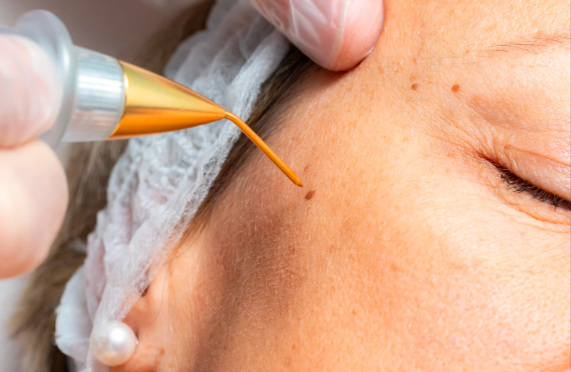Warts are skin growths caused by the human papillomavirus (HPV), a virus known for its ability to hide within the skin even after the wart seems to be gone. This hidden nature of the virus is one of the main reasons why some Warts removal Dubai return after treatment. Although treatments target the visible wart, they do not always reach the virus embedded in deeper skin layers.
The Nature of the HPV Virus
HPV thrives in the skin and can remain dormant for weeks or even months. Even after successful wart removal, the virus may still exist in surrounding tissue, ready to reactivate under the right conditions. This explains why some individuals experience a return of the wart in the same spot or nearby.
Incomplete Wart Removal
Surface-Level Treatments
Some treatments only work on the surface of the skin and do not penetrate deeply enough to eliminate all infected cells. In such cases, the visible wart may disappear temporarily, but the virus remains alive. Once triggered again, the virus causes new wart growth in the same area.
Missed Viral Cells
If even a small portion of the virus-infected tissue is left behind, the wart can regrow. This is especially common in thicker or deeply rooted warts that require more thorough treatment. Without full eradication of the virus at its source, recurrence is likely.
Immune System and Wart Regrowth
Individual Immune Response
Each person’s immune system responds to HPV differently. Some people naturally suppress the virus more effectively, leading to successful wart removal without regrowth. Others have a slower immune response, allowing the virus to remain active beneath the skin even after treatment.
Low Immunity as a Trigger
Periods of weakened immunity—such as during stress, fatigue, or illness—can lead to wart recurrence. The virus may lie dormant for long periods and then reactivate when the body is less able to fight it. This is a common reason why warts can suddenly reappear after months of clear skin.

Skin Trauma and Reinfection
Damaged Skin Invites the Virus
Skin that is dry, cracked, or wounded provides entry points for the virus to reactivate and spread. Warts often reappear in areas that are frequently irritated or exposed to pressure. Keeping the skin intact and healthy is essential in preventing new wart formation.
Scratching and Touching
Touching or scratching the area where a wart once existed can contribute to recurrence. This behavior may spread the virus to nearby skin, especially if hands are not washed properly. Self-infection can lead to the appearance of multiple new warts in different areas.
Multiple Wart Infections
More Than One Wart
Individuals who develop clusters of warts may face more challenges with recurrence. When several warts are present, it indicates that the virus has a stronger presence in the skin. Treating one wart may not be enough if others are actively spreading the virus nearby.
Cross-Contamination Between Warts
Warts can spread from one area to another, especially during shaving or scratching. Treating all affected areas at once can help reduce the likelihood of recurrence. Leaving some warts untreated allows the virus to remain active in the body.
Time Between Treatment and Regrowth
Immediate vs. Delayed Return
Some warts reappear within weeks of removal, while others come back after months. The timing of recurrence varies depending on the treatment method, skin type, and immune strength. Just because a wart has been gone for a while does not guarantee it won’t return.
Watching for Early Signs
Paying attention to the skin after treatment can help catch regrowth early. Redness, roughness, or a slight bump may be the beginning of another wart. Early detection allows for quicker management and lowers the chance of spreading the virus.
Preventing Future Warts
Hygiene Habits Matter
Maintaining good hygiene helps reduce the chance of virus transmission and regrowth. Washing hands regularly, not sharing personal items, and avoiding walking barefoot in shared spaces are all helpful habits. These practices limit both self-infection and spread to others.
Supporting Healthy Skin
Healthy skin is a strong barrier against viruses. Keeping the skin moisturized, avoiding injury, and wearing protective footwear can help prevent HPV from entering and reactivating. These small steps make a difference in long-term wart prevention.
The Role of Warts Removal Treatments in Dubai
Warts Removal Treatments in Dubai offer several approaches designed to target both the wart and its viral source. Some methods focus on deeper removal, helping to reduce the chances of regrowth. People who complete treatment often report longer periods without recurrence when the wart is fully treated.
These treatments also aim to reduce the presence of the virus on the skin, making it harder for the wart to return or spread. While no method guarantees permanent removal for every case, thorough treatment combined with proper care lowers the odds of future outbreaks.
Long-Term Management of Warts
Being Proactive
Even after successful treatment, remaining proactive is important. Checking the skin regularly, avoiding triggers, and protecting areas where warts previously appeared all contribute to lasting results. Wart management doesn’t end with removal—it continues with prevention.
Educating Yourself
Understanding how the virus works empowers individuals to make better decisions about their skin health. Knowing that recurrence is not uncommon and taking steps to limit it helps manage expectations and encourages consistent prevention strategies.
Conclusion
Wart recurrence is often tied to the complex behavior of the HPV virus and how the body responds to it. While some people never see a wart return after treatment, others may deal with multiple episodes over time. Factors like incomplete removal, weakened immunity, and reinfection play a big role in regrowth.
With the help of effective Warts removal in Dubai and a strong commitment to prevention, it’s possible to reduce the risk of warts coming back. Paying attention to skin care, hygiene, and immune health goes a long way in maintaining wart-free skin for the long term.Ask ChatGPT